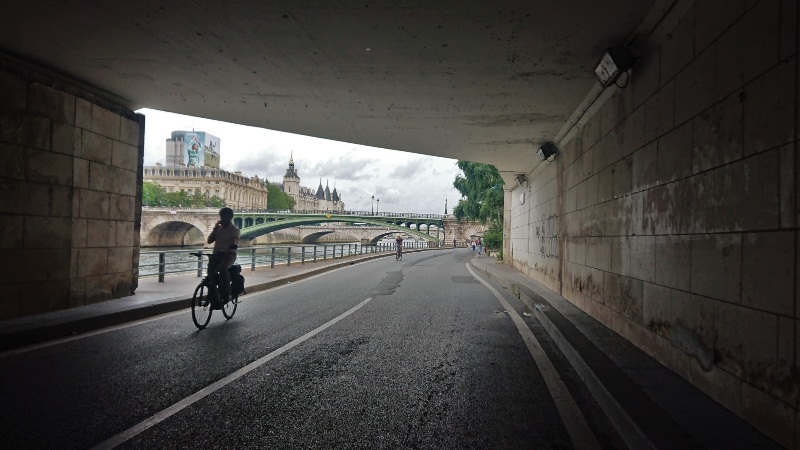
European cities are improving cycling for citizens
23 Jan, 2024
ECF published a short analysis on how European cities are implementing the EU Urban Mobility Framework to promote and enhance cycling for their inhabitants.
Published by the European Commission in December 2021, the Urban Mobility Framework is a policy aiming to improve mobility systems in European cities by tackling air and noise pollution, reducing carbon emissions and making roads safer for people. ECF warmly welcomed the new policy when it was released, recognising the EU’s commitments to boosting cycling.
Two years on, the trend towards more sustainable modes of transport, including cycling, is undeniably happening across European cities. Many are eager to transform their road space and transport systems to address problems such as dirty air, congested streets, unsafe roads for pedestrians and cyclists, excessive noise and persistent carbon emissions.
Our short analysis highlighted recent urban measures that enhance cycling in several European cities. For example:
• In December, Amsterdam implemented a 30 km/h speed limit for motor vehicles on 80% of its roads—a sign of the city’s commitment to making its streets safer for everyone.
• In Paris, cycling traffic has increased by 166%, thanks to bold political leadership matched by the proper levels of funding and infrastructure building.
• In Munich, a city-wide campaign encouraged people to travel by bicycle and numbers show that concerted investments in behaviour change can make an impact.

Our analysis specifically highlights the situations in Helsinki and Brussels, as examples other European cities can follow to get more inhabitants to cycle.
Helsinki: On the road to becoming a cycling city
Helsinki, home to approximately 12% of Finland’s population, aims to be fully carbon-neutral by 2030. As one-fifth of the city’s emissions come from traffic, walking and cycling measures are essential in transport’s decarbonisation.
Helsinki is implementing a bicycle action plan until 2025 to make the city cyclable for people of all ages year-round. It aims to attain a cycling modal share of 20% by 2035 through measures such as maintaining a high-quality cycling infrastructure, providing ample parking for cyclists and promoting cycling through a positive campaign. An investment of €20 million (14% of Helsinki’s total transport budget) will secure the implementation of the action plan.
In 2019, Helsinki made headlines when it recorded zero road fatalities. This result followed the measure of lowering motor vehicle speed limits to 30 km/h, which most streets have. With other measures, such as automatic cameras, city authorities are confident that Helsinki’s streets have become more friendly to all users.
Likewise, since 2020, about 50km of cycling infrastructure has been built in its inner-city target network, together with dozens more kilometres of cycle superhighways. Thousands more bike parking stations have been installed on city streets and citizen surveys show improved perceptions of cycling safety.
Brussels: Making good moves for cycling
The Brussels Capital Region has long been known to be overly congested with car traffic, ranking among Europe’s worst. The ongoing implementation of Good Move, an urban mobility plan approved in 2021, aims to change this.
One of the plan’s positive points has been its implementation of temporary cycling infrastructure during the pandemic. Some of this infrastructure has been made permanent, notably on inner-city streets that have been dominated by car traffic.
New infrastructure was also built elsewhere in the region, which has led to a growth in the number of people who cycle. A massive increase was confirmed by the city’s automatic cycle counters, which counted over 11 million passes in 2023. Even with a need for safer cycling infrastructure, more and more people in Brussels commute to work by bicycle.
Brussels Capital Region has set a goal of achieving an 11% modal share for cycling by 2030, which seems well on its way towards achieving its goals.
Next steps
Going forward, cities around Europe can continue to promote cycling and the measures in the Urban Mobility Framework by implementing good cycling strategies, building safe and usable infrastructure for all people cycling and offering financial incentives to citizens to encourage them to cycle and purchase or lease bikes. If more European cities follow the example of the cities in our analysis, then cycling can truly become a full mode of transport for Europeans across the continent.
Download the short analysis HERE.
Regions:
News category:
Contact the author
Recent news!
Upcoming events
Contact Us
Avenue des Arts, 7-8
Postal address: Rue de la Charité, 22
1210 Brussels, Belgium
Phone: +32 2 329 03 80
Email: office@ecf.com









